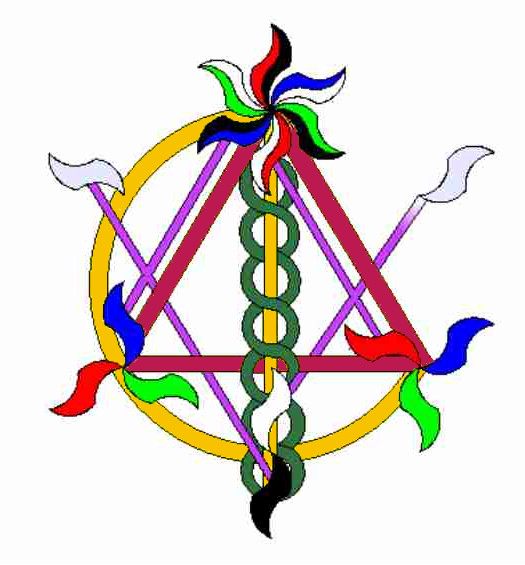
The Matter Mandala is a pictorial representation of the fundamental particles of the standard model of particle physics and the intricate way in which they are woven together by the forces between them. The coloured lines represent different fundamental forces and the flowers and petals the matter particles.
The elements in the image are:
 Left handed up-down quark doublet.
Left handed up-down quark doublet.
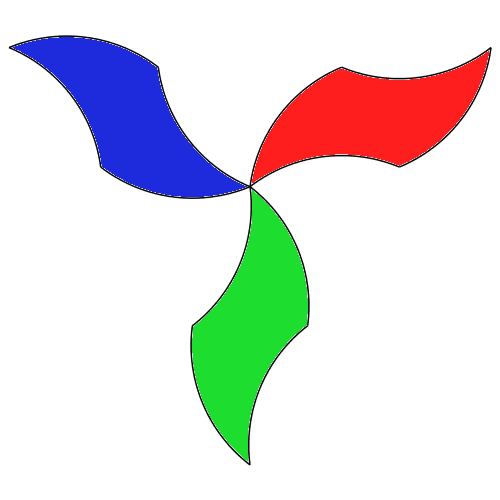 Right handed down quark.
Right handed down quark.
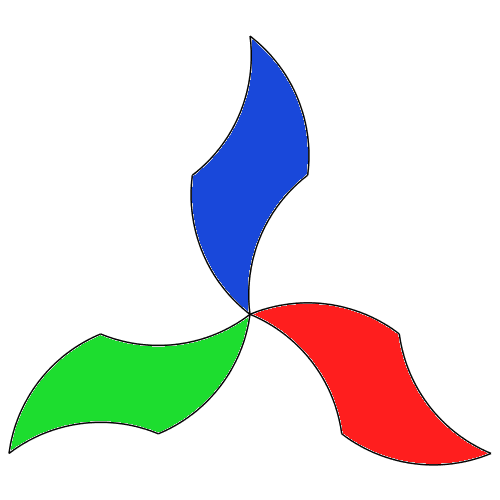 Right handed up quark.
Right handed up quark.
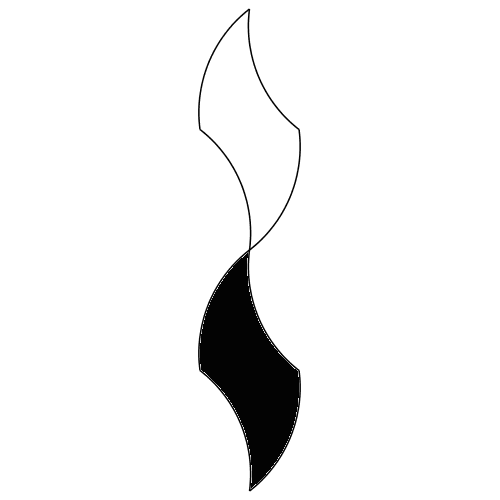 Left handed electron-neutrino lepton doublet.
Left handed electron-neutrino lepton doublet.
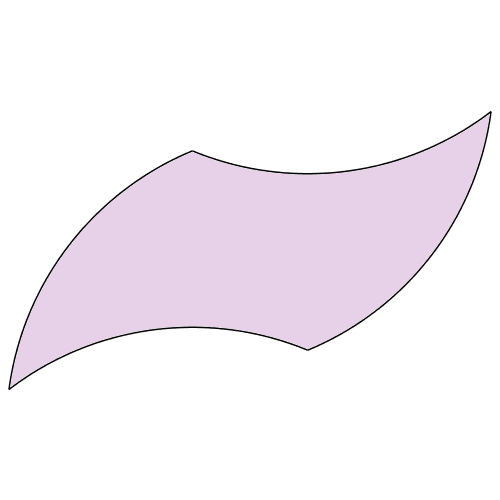 Right handed electron.
Right handed electron.
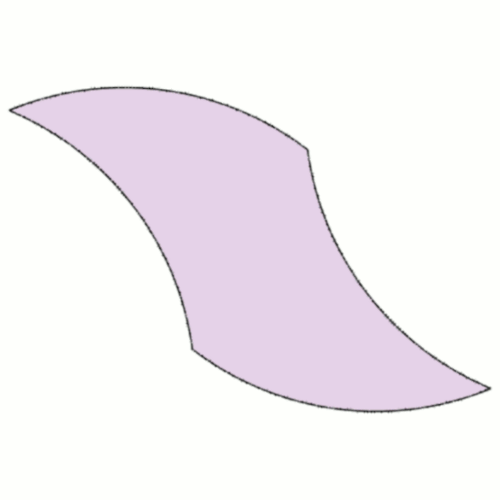 Right handed neutrino.
Right handed neutrino.
 Electromagnetism (photon).
Electromagnetism (photon).
 Colour force (gluons).
Colour force (gluons).
 Weak force (W's and Z).
Weak force (W's and Z).
 Higgs' boson.
Higgs' boson.
So what are these?
Apart from gravity, which makes everything accelerate the same way, there are three known fundamental forces: electromagnetism (electricity and magnetism unified into a single force, quantum electrodynamics, or QED for short) and two different nuclear forces, rather prosaically called the "strong" nuclear force and the "weak" nuclear force. The strong force is a manifestation of an underlying force called the colour force (more technically quantum chromodynamics, or QCD for short). The strong force binds neutrons and protons together in atomic nuclei, while chromodynamics binds quarks together to form protons and neutrons.*
We think of these forces as arising from fields. Force fields such as electric and magnetic and fields can oscillate giving rise to waves, like electromagnetic waves in electromagnetism. But in the theory of quantum mechanics the energy of waves is quantised and is thought of as being carried by particles, the photon for electromagnetism. Is light made up of waves or particles? In quantum mechanics it is both, a wave is a collection of particles. In quantum mechanics each of the three fundamental forces is mediated by an exchange of particles: photons for electromagnetism, gluons for the colour force (eight different kinds of them, called gluons because they constitute the "glue" that binds quarks into protons and neutrons) and three particles called W+, W- and Z particles for the weak force. Photons, particles of light, are themselves electrically neutral but are associated with electromagnetic waves --- they move at the speed of light and have no mass. Gluons are associated with waves the colour field, they are also electrically neutral and are also believed to be massless, moving at the speed light, though no one has ever seen a gluon directly (they are confined within protons and neutrons because the colour force is so strong). The weak force is different in two ways, W and Z particles are massive and also W particles carry electric charge, there is a W+ and a W-, though the Z is electrically neutral and is often denoted Z0 to remind us of this. One more particle is the Higgs' boson. The Higgs' boson is massive and electrically neutral, but it is not so clear as to whether or not it should be classified as a particle of matter or a particle of force, it is really in a class of its own, but it is viewed as a force particle in the Matter Mandala.
The coloured lines in the Matter Mandala represent these three fundamental forces and the Higgs' field: yellow is electromagnetism (the photon); orange is the colour force (gluons); green is the weak force (W's and Z) while the Higgs' field, with its associated Higgs' boson, is purple.
The flowers and petals in the Matter Mandala represent the different kinds of matter particles in the standard model of particle physics. The great theoretical physicist Richard Feynman has said that, if all of scientific knowledge were lost and we could only pass one piece of information on to future generations, it should be that all matter is made up of particles. Matter particles are not the same as force particles, in fact they couldn't be more different. Force particles are gregarious, they congregate together and like to form waves --- a laser beam is a quantum mechanical wave of light in which every photon is in the same quantum state. Matter particles are anti-social, two identical particles of matter cannot be in the same place at the same time --- they exclude each other. This is a very important property, without it the periodic table of elements would not exist and matter would be unstable.
The fundamental particles that make up all of the matter that we see around us fall into two basic types: quarks and leptons. The basic distinction is that quarks feel the colour force while leptons, such as electrons, do not. Another important difference between chromodynamics and electrodynamics is that there is only one kind of electric charge, which can be either positive or negative, but there are three types of colour charge (hence the moniker chromodynamics). The three types of colour charge are called red, blue and green and they add up to white, which is neutral. Mixing red, blue and green gives white but mixing blue and green gives cyan, so mixing red and cyan is also white --- cyan is the opposite of red. The opposite colours to red, green and blue are cyan, magenta and yellow, mixing cyan, magenta and yellow gives black --- the opposite of white.** Protons and neutrons are made up of three quarks each of which have a different colour, making protons and neutrons white, they are colour neutral. Gluons carry one colour and one anti-colour, there is a green-cyan gluon for example. Since there are three colours and three anti-colours there are nine possible gluons, but one of the nine combinations, red-cyan + green-magenta + blue-yellow, is redundant --- it is completely colour neutral and has no role --- there are only eight gluons.
The weak force is completely different to the strong force and it makes some nuclei unstable. It is responsible for beta-decay and is the source of energy in the Sun and in all radioactive minerals, and hence is ultimately the energy source for all life on Earth. Just as electrons have an electric charge they also have a "weak force" charge, but they do not have a "chromo", or colour, charge. Quarks on the other hand carry all types of charge: electric, weak and colour charge. The weak charge is not the same as the electric charge, there are two types of weak charge which are shown as black and white in the diagram (not white as in the mixing of red, green and blue, but a completely different type of white --- at some stage these analogies get a little stretched!). In a technical sense black and white weak charges can be viewed opposites but not like positive and negative electric charges. We should think of black and white weak charges as being different because a black lepton is a very different beast to a white lepton, they are different particles with different electric charges. An electron is a black lepton but a white lepton has no electric charge and a tiny mass compared to that of an electron, it is called a neutrino --- a little neutral one.
So there are three different colour charges (quarks are triplets, but not identical), two different weak charges (doublets, but not twins) and one type of electric charge, together with their opposites.
In addition every particle has an associated an anti-particle with the exactly same mass but opposite charges, this is an unavoidable consequence of marrying Einstein's theory relativity with the theory of quantum mechanics. For example the electron, with a negative electric charge has a positively charged anti-particle, called a positron. The anti-particle of a green-cyan gluon is a magenta-red gluon but the photon is its own anti-particle. The W- is the anti-particle of the W- and the Z0, like the photon, is its own anti-particle. If a matter particle and an anti-matter particle get too close to each other they annihilate in a burst of radiation: electrons and positrons annihilate into photons, a quark and an anti-quark could annihilate into either photons, if their colours are opposite, or into gluons, if their colours were not opposite. A black lepton is not the anti-particle of a white lepton, they are really different particles and do not annihilate into energy when they meet. The Matter Mandala only shows the matter particles, not their corresponding anti-particles, the force particles include their anti-particles.
In fact electromagnetism and the weak nuclear force are inextricably intertwined together by the Higgs' boson. In the theory of quantum mechanics all particles have fields associated with them, the photon is associated with the electromagnetic field for example, and the Higgs' boson is no exception, its field is called the Higgs' field. The vacuum is full of Higgs' field, you cannot see it, feel it, touch it or smell it, but it is there, it is a physical background field present throughout all space. The W's and the Z only acquire their mass through interactions with this all pervading Higgs' field. But at high energies the background Higgs' field drops to zero and the W's and the Z become massless and start travelling at the speed of light. At low energies the Z is distinguished from the photon because the Z is massive (they are both electrically neutral) but at high energies, when the Z becomes massless, they are indistinguishable from photons, it is as if there are two photons and these mix together and loose their separate identities to be replaced by two other massless electrically neutral force particles, called the W0 and the B boson. The W0 is so named because it has all the characteristics of an electrically neutral W, at high energies the W+, W- and W0 are a triplet of massless weak force bosons. The B on the other hand is more like a high energy photon, but it is not associated with electric charge, it is associate with a different kind of charge that we call hypercharge --- the electric charge disappears at high energy and is replaced by a new kind if charge called hypercharge.
There is a further twist to the story though. Quarks and leptons have an inbuilt handedness, left-handed and right-handed, called chirality. Fundamental particles are like little gyroscopes, spinning on an axis, and if we reflect them in a mirror they spin the opposite way. An electron or quark reflected in a mirror is not the same as the original electron or quark. We might think that reflecting in a mirror would not change the charge of a particle but, while this is true for colour and electric charges, it is not true for weak charges --- reflecting a weakly charged particle in a mirror turns off the charge! Left-handed quarks and leptons have weak charge, they are either black or white and form weak doublets, right-handed quarks leptons have no weak charge at all. A left-handed, white quark is called an "up" quark while a left-handed black quark is called a "down" quark. There are also right-handed up and down quarks with no weak charge. A left-handed electron is a black lepton, the corresponding left-handed white lepton is called a "neutrino" because it is electrically neutral and has a tiny mass. Neutrinos are extremely hard to detect precisely because they have no electric charge, there are about 100,000,000,000 neutrinos passing through your eyes every second, coming from weak interactions in the core of the Sun, but you cannot see them. Low energy neutrinos can pass though the entire Earth without being affected, though they do become easier to detect as their energy increases. Neutrinos are produced in vast quantities in supernova explosions of distant stars. There is also a right-handed electron with the same electric charge as a left-handed electron but no weak charge.
As far as the colour and electromagnetic forces are concerned left and right-handed particles are identical, it is only the weak force that treats them differently (but at high energies their hypercharges are different).
In the standard model of particle physics there is no right-handed neutrino, the model is perfectly consistent without one, and the left-handed neutrino is strictly massless (for technical reasons for a matter particle to have mass it must have both left and right-handed forms). But a right-handed neutrino would be almost impossible to detect, it has no colour charge, no electric charge and no weak charge.
So now we are in a position to understand (most of) the Matter Mandala. The yellow, orange and green lines represent the three forces: yellow for electromagnetism (photons); orange for the colour force (gluons) and green for the weak force (W's and Z).
As for the matter: